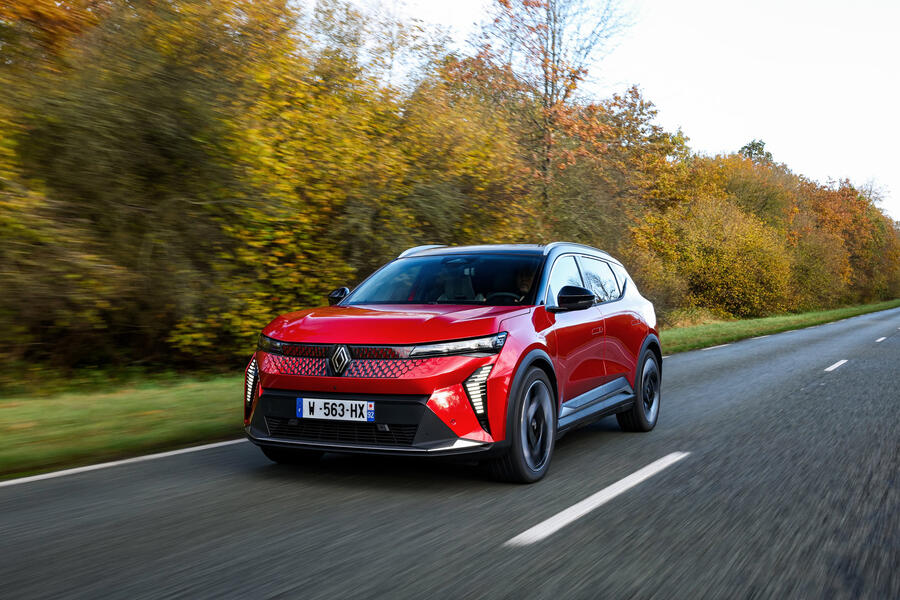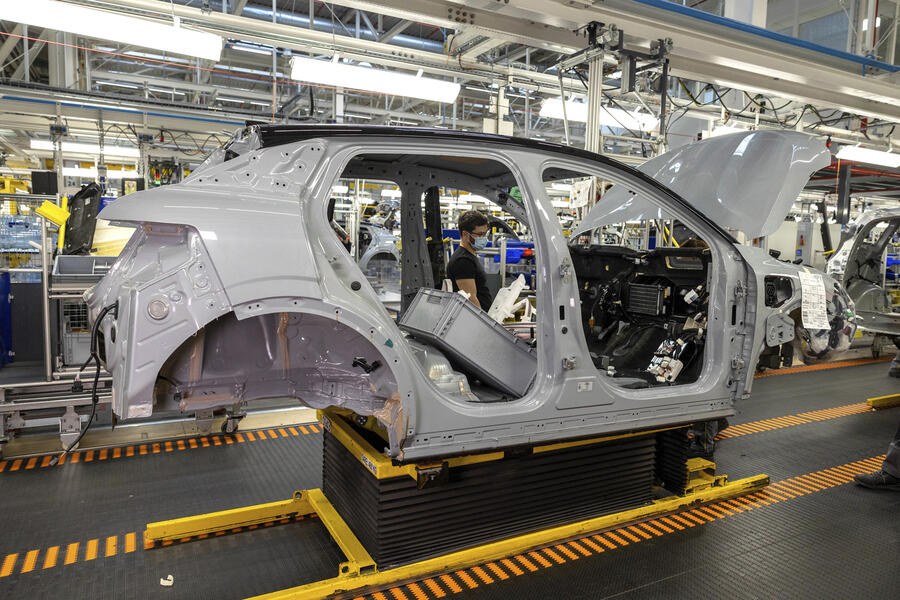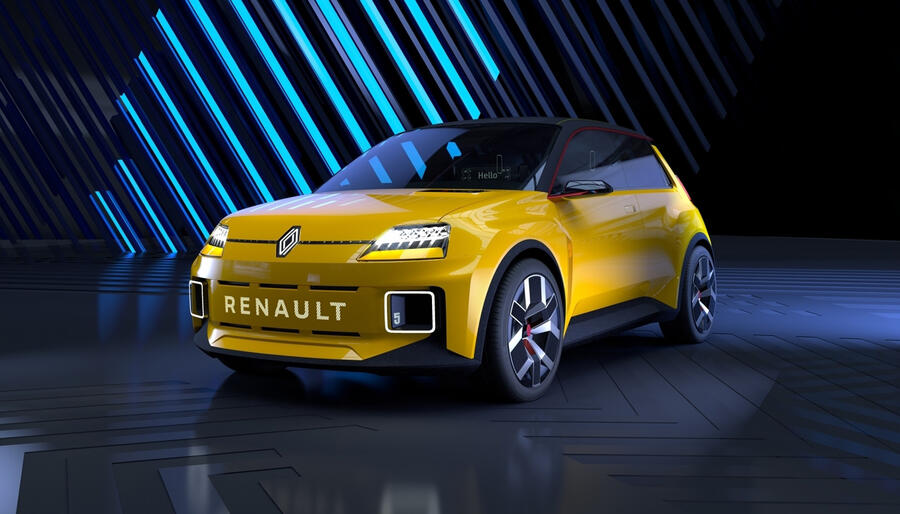Recent Updates
03/01/2024 12:00 PM
Reports: Nissan Leaf production to end in Sunderland this week
03/01/2024 12:00 PM
Fisker Pear EV delayed as company seeks investment
02/21/2024 12:00 PM
Renault CEO Luca de Meo: how to save the car industry
02/21/2024 12:00 PM
Autocar magazine 21 February: on sale now
02/21/2024 12:00 PM
21% of UK drivers prioritise motoring issues in general election
02/21/2024 12:00 PM
Mild-hybrid tech boosts Vauxhall Astra economy and performance
02/21/2024 12:00 AM
EV charging must be priority for restored Northern Ireland Assembly
02/21/2024 12:00 AM
Mini Countryman
02/20/2024 12:00 PM
Volvo XC40 and C40 get new names and up to 436bhp
02/20/2024 12:00 PM
New Toyota Prius to go on sale priced from £37,315
EV, Hybrid, Hydrogen, Solar & more 21st century mobility!

De Meo: "Today, our sector is facing its most profound change in 150 years."Writing exclusively for Autocar, de Meo outlines a plan to drive EV uptake and pressure from new players
First, we watched the rise of Tesla and now we’re witnessing the rise of China. For us Europeans, these are challenging times. But are we fully aware of what is at stake?
From the UK perspective, I’m writing about an industry that has a turnover of around £67 billion a year and adds £14bn of value to the economy every year through £77bn of trade, as well as accounting for around 7% of the nation’s R&D spend and employing some 800,000 people.
From an EU perspective, I’m writing about an industry accounting for 8% of GDP, 30% of R&D spending and 13 million jobs. The UK may no longer be part of the EU, but on this issue, I think we face the same challenges together. It is very simple: strip out the automotive industry and Europe will find itself with a structural trade deficit.
Today, our sector is facing its most profound change in 150 years. The urge to reduce our environmental impact, the phasing out of the internal combustion engine by 2035 and the ever-increasing safety and cybersecurity requirements for our cars are making them heavier and more expensive. All these constraints add up.
Regulations have piled up, sometimes with unexpected results: the average European car is 60% heavier than 20 years ago, it is 50% more expensive and the number of jobs at car makers has fallen by up to 40% in some countries. Of course, these new cars are also more environmentally friendly.

But there’s another side to this argument. Unfortunately, more expensive cars are also cars that people are less likely to buy. The reality is that we’re keeping older and more polluting cars on the roads for longer, and the age of the European car fleet has risen from seven to 12 years on average.
What’s more, for more than a century, car makers had been playing one demanding but familiar sport, in which the combustion engine set the rules. Now we have to excel in several disciplines with very different and specific requirements: electric vehicles, software, mobility services, the circular economy…
Each of these sports requires a new value chain, covering new materials, new players, a whole new world to understand, from raw material extraction to battery recycling.
This new, extended and fragmented playing field is also characterised by unprecedented volatility. For the internal combustion engine, the technology we were working with was mature and innovation incremental. Batteries are very different: a billion-pound investment in a gigafactory can be called into question overnight if a new chemistry pops up.
Raw material prices are also volatile. For example, the price of lithium has multiplied by 12 and divided by two in only three years. Finally, the regulations we’re working to are volatile, as illustrated by the recent debates – and subsequent regulation changes – about the Euro 7 emissions standard.

For the automotive industry, the age-old mantra was scale and efficiency. Now a new imperative has come to light: innovation and strategic agility. This is what car makers now have to put at the core of everything they do.
The new global geography I referred to at the start is also shaking our European certainties. With the internal combustion engine, our leadership was undisputed. For a century, we benefited from our expertise with this technology, and it was a barrier to entry for newcomers to the industry.
Today, Europeans find themselves in a position of relative fragility. The Chinese control 75% of the world’s battery production and 90% of lithium refining.
In addition, while the Americans massively stimulate and incentivise the industry and the Chinese organise it through planning, we Europeans regulate, often with no coherence and without any holistic view of our challenges.
Of course, building our future as European car makers is first and foremost about entrepreneurial innovation on our side. We have to invent business models fit for the new playing field, invest in new technologies and offer products and solutions for an affordable and sustainable mobility.
Over the past three years, Renault has not stood idle. One of our proposals has been the creation of Ampere, our dedicated EV and software arm. This is the most substantial and comprehensive response from the European automotive industry to the challenges coming from both East and West.

However, today I’m deeply convinced that we also need a collective response and a public authority able to coordinate a European mobilisation if we want our automotive industry to perform to its full potential.
Having devoted all my career to this industry, I see the question set before us today as pretty simple: does Europe have the will to finally equip itself with a genuine industrial policy for our sector, with a holistic ambition, instead of just piling up deadlines and fines?
In my view, this should be our top priority. We need a few clear principles and objectives, a plan and a dynamic review process so that we can constantly adapt, because what comes next will be no walk in the park.
As an antidote to the proliferation of diktats from the various authorities, let’s establish a one-stop shop for mobility and automotive regulations. Let’s foster the emergence of a framework of stable rules and standards across Europe, following the example of what the Chinese have successfully achieved.
Let’s put in place all the conditions for the emergence of structural projects and allow European champions to emerge in key technologies. Europe did it in the past: it is called Airbus.
It is just as urgent to finally coordinate the efforts of the many industries involved in the huge automotive transition that is already under way, because it is intertwined with challenges across other sectors, including those of the energy and digital sectors, which are undergoing their own revolutions.
For instance, the mining, chemicals, energy and manufacturing industries, plus infrastructure, national and local authorities all need to work together.
Their efforts have to be orchestrated across the entire value chain, from upstream to downstream. We also need to be alert to what our competitors are doing and to keep adapting. Faced with the challenge from China and the US, Europe must invent its own model.
A hybrid model between private initiative and public intervention should enable us first to protect and strengthen ourselves and then in the medium and long term go back on the offensive, always in a context of fairness and healthy competition.
European car makers are fully committed to decarbonisation: they are investing £200bn in electrification. But while they applaud the objective, they believe they should have a say about how it is achieved.
That could mean adopting a principle of technological neutrality, encouraging Europe’s 200 biggest cities to harmonise their mobility policies and setting up green economic development zones in each country to foster the emergence of industry or business clusters, where companies, innovators and suppliers can coexist to share resources and development.
A key part of that is developing a market of compact and affordable electric vehicles to ensure that cars remain affordable for all, with limited impact in cities and on the environment.
The list is long, but fostering an ecosystem for hydrogen production and distribution or around software development for common goals are concrete examples of value chains that require a team approach. Let the public authorities identify 10 of them as strategic priorities and launch cross-cutting initiatives on a European scale.
Let’s force the relevant players to coordinate. I think this would be enough to get the ball rolling and bring us up to the level we deserve. These challenges are facing us all: politicians, manufacturers, stakeholders and citizens.
To pave the way for a shared response and collective mobilisation, let’s put the automobile back at the heart of the public debate. Here I have shared just some of the proposals I am putting forward, but I hope it demonstrates that if we stop seeing the automotive industry as the problem, it will be part of the solution. For the EU and – why not? – for the UK.
